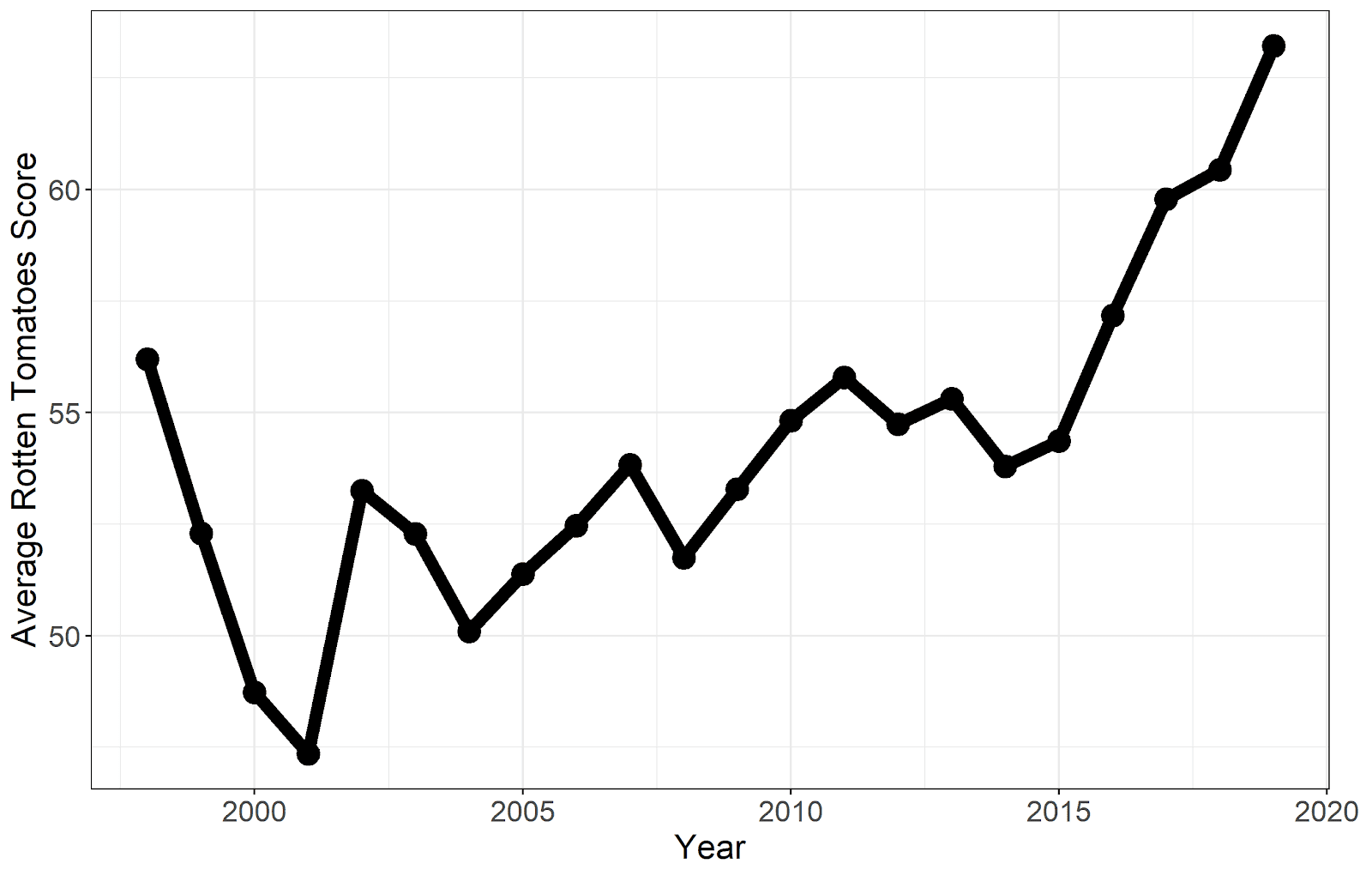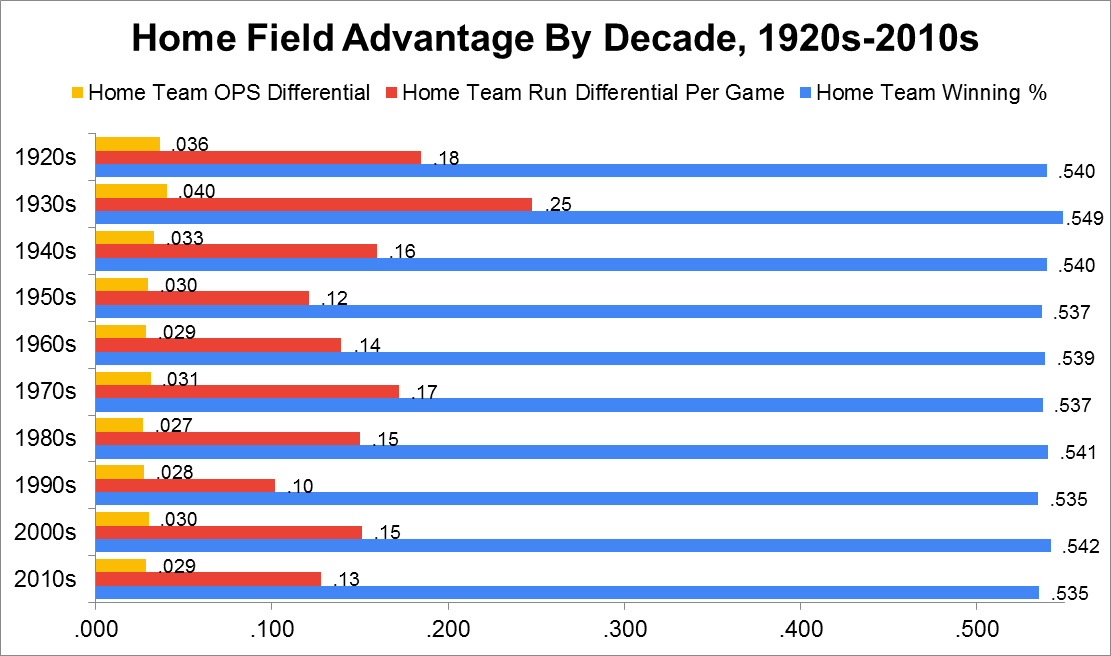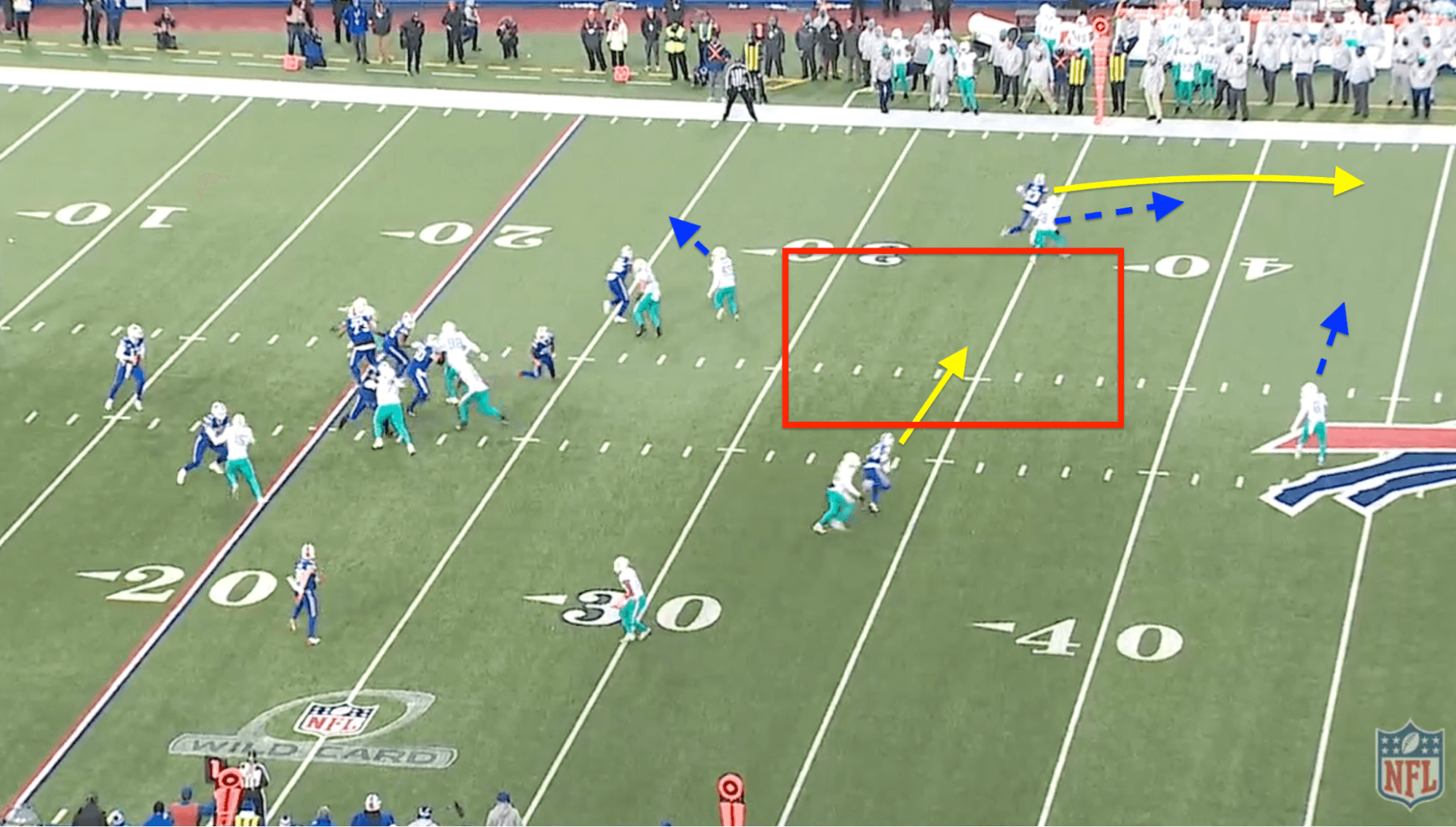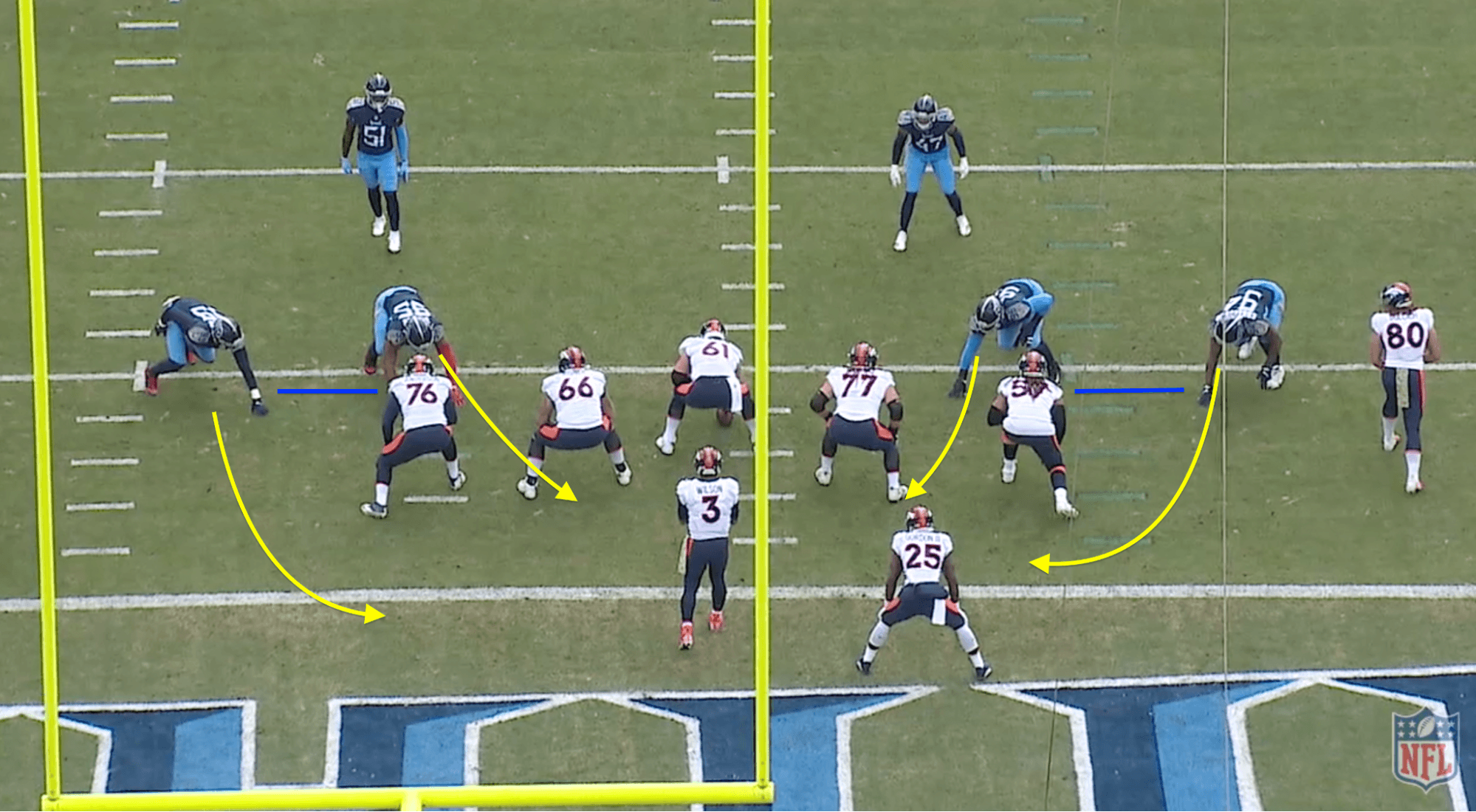
Everybody stay calm. It’s Bills vs. Chiefs.
The greatest game of last season—of perhaps the last several seasons—was played between the Buffalo Bills and Kansas City Chiefs just nine months ago. You remember? The one in which Josh Allen scored the game-winning touchdown, and then Patrick Mahomes somehow came back and scored the actual game-winning touchdown—until, of course, Allen drove down the field and scored the final game-winning touchdown—that is, until Mahomes used all 13 seconds remaining on the clock to drive into field-goal range, send the game into overtime, win the coin toss, and (you guessed it) score the actual, final, I-really-mean-it-this-time, game-winning touchdown.
Yeah. Pretty good football game.
Entering Week 6, it would be unfair to expect the same fireworks from the rematch. But of course, there is still reason to get excited. These are the two best teams by expected points added per dropback by a country mile, as Allen and Mahomes have become the defining quarterbacks of this generation of football. And they’re both AFC contenders, looking to repeat as division winners and make the playoffs. Where they might meet again. And might meet every year. For the rest of time.
OK, it’s very tempting to expect the same fireworks.
There is no doubt that Buffalo and Kansas City have planned around this Week 6 matchup for awhile. So Steven Ruiz and I took a look at last year’s matchup—as well as this year’s versions of the Bills and Chiefs—to try to understand what each team will bring to this game. We’ll break it down on both sides of the ball; I’ll play the Chiefs, and Steven will play the Bills.
We’ll start there: when the Bills have the ball. Ruiz, take it away. —Ben Solak
Bills Offense vs. Chiefs Defense
Ruiz: Since Solak is cosplaying as Chiefs defensive coordinator Steve Spagnuolo, am I allowed to bully him for allowing Gabriel Davis, a receiver with 13 career touchdown receptions coming into last season’s playoff game, to set an NFL postseason record with FOUR touchdown receptions?

How could you possibly let this happen, Solak? And you call yourself an NFL defensive coordinator. Embarrassing …
Solak: Travis Kelce scored four touchdowns on seven catches against Patrick Graham last week. Bully him.
Ruiz: I don’t want to hear it!
But, really, neither Solak nor Spagnuolo should feel too embarrassed about letting Davis have a big game. An early-season ankle sprain kept Davis out of this season’s Week 2 win over Tennessee and limited his reps against Miami the following week, but when he’s been fully healthy, he’s pretty much been doing the same things he did to the Chiefs defense in January. On Sunday against a banged-up Steelers defense, he nearly pulled off a Randy Moss vs. Dallas on Thanksgiving game:

And back in the season opener, he gashed the Rams for 22 yards per reception:

Now take a look at the routes that Davis ran on those big gains. They’re all deep posts and vertical benders. Those routes became an indispensable weapon for Buffalo’s passing attack down the stretch of the 2021 season, and have remained as such this season. With opposing defenses selling out to stop deep crossing routes by Stefon Diggs—which had been a favorite of Allen’s during his breakout season in 2020—the Bills’ adjustment was to just throw even more deep routes. Instead of having the receiver break across the field horizontally, then-offensive-coordinator Brian Daboll put the cannon attached to Allen’s right shoulder to good use on vertical throws over the top. Davis, whose 4.5-second 40 time belies his ability to stretch the field at his size, might be the perfect receiver to run those routes. He’s a big fella who knows how to use that frame to box out undersized corners downfield.
With NFL defenses playing more quarters (and more two-high coverages in general), it’s getting harder to produce explosive, downfield shots in the passing game … unless, of course, you have an alien capable of throwing the ball 70 yards downfield. Unfortunately for Kansas City, and the other 30 teams in the league, the Bills have one of those. No quarterback has attempted or completed more throws to receivers running deep post routes since the start of the 2021 season, per TruMedia. And Allen’s 421 passing yards on those throws clears the rest of the field by 110 yards. Here are the top five QBs in such attempts:
Targeting Post Routes of 20-Plus Air Yards, Since 2021
I’m not exaggerating when I say that an Allen-to-Davis post route might be the most effective play in the history of ball. The duo has been perfect on those plays, going 9-for-9 for 426 yards and four touchdowns. That’s 47 yards per throw.
Solak: Well, that’s very concerning.
Ruiz: In the postseason epic, the Chiefs threw a bunch of different coverages at the Bills and Davis, and none of them really worked. One of his scores came against an all-out blitz. Another came against Cover 3, and the big one was against Cover 6, which is quarters to one side and Cover 2 to the other. On that play, the Bills attacked the quarters side by baiting the safety with an in-breaking route from the tight end while Davis ran a deep post from his outside alignment.
You can see why that route combination is tough for the secondary. The safety has to have eyes on the tight end, and with the corner expecting inside help from that safety, he will play on the outside of the receiver. So a post route would naturally take advantage of his leverage:

And all of Davis’s touchdowns in the game followed a similar pattern: Davis getting inside leverage on his man and letting his frame take care of the rest.
If Spagnuolo and Solak want to avoid another embarrassing display, they’ll need to give their corners more help—especially on these routes by Davis. Stop those, and you’ll turn Allen into a dink-and-dunk passer. While he’s shown a capacity for that style of play early in the season, he’s at his most dangerous when he’s chucking the ball downfield. So how are you going to stop that, Solak?
Solak: Take my ball, go home, and cry.
Not really, but almost. Josh Allen and this Bills offense tends to create that sensation, especially when Davis is playing and, critically, healthy—something he hasn’t been for the past couple of weeks, although he looked OK against the Steelers on Sunday.
It’s worth noting that doubling Davis isn’t really an option here. The Chiefs doubled Davante Adams against the Raiders a few times, and while they were able to take away the intermediate routes, they were still susceptible deep.
Most bracket schemes will have this sort of weakness: double-moves and “beaters” off the expected route combinations will suddenly make a double-covered receiver … uncovered.

If you don’t want to double Davis, you can cloud coverage his way. For example, the Chiefs could play with a Cover 2 safety over the top and a man coverage corner playing in the trail underneath. This discourages any downfield shots more than a bracket, because the capping safety is literally just there to keep depth on the receiver.
This feels like a good answer for the Chiefs as a base Cover 2 team—they run it the fourth most of any team in the league—only they don’t really have great man-cover corners. If they try to cloud coverage over Davis, they’re spending a deep-half safety and a cover corner on one player—and one who isn’t even Stefon Diggs—which will leave them stuck in one of two coverages on the backside: Either two-man across the board (which means one of Davis or Diggs is getting man coverage from a non–L’Jarius Sneed corner) or quarters (which, from a schematic perspective, is asking Josh Allen to throw for 600 yards and six touchdowns on you).

So I don’t want to play man—the Bills are more talented at receiver than the Chiefs are at corner. I don’t even really like my options to double Davis and live with the consequences otherwise.
So I’m probably going to get wild.
On defense, when you can’t beat ’em, invite chaos. When you look at how the Dolphins found success against the Bills in Week 3 (Davis’s bad ankle, the extreme heat, and the Bills’ bad red zone performance notwithstanding), you see a semblance of a blueprint. The Dolphins spent a lot of time blitzing, and when they blitzed, Allen largely burned them (to the tune of 0.62 EPA per play)—but when they bailed out of the blitz and sent only four, Allen’s efficiency dropped (to -0.04 EPA per play).
This approach requires a few steps. For one, you have to send pressure. The Chiefs are league average in blitz rate right now, but Spags tends to be one of the league leaders in dialing up pressure, so no worries there. You also have to get home with that pressure. Allen will burn you sometimes, but if you can get a sack or—even better—a turnover, you’ll prevent the Bills from scoring on every drive and putting the game immediately out of reach.
Once you establish the threat of the blitz, it comes time to bluff and bail into zone coverage. The Chiefs are well suited for this zone-blitz approach—again, Spags has historically had these calls available to him, and the Chiefs have shown them at times this year. Kansas City has been especially strong when playing with three safeties on the field, as they’ve rotated second-round rookie Bryan Cook onto the field with incumbent Juan Thornhill and free-agent addition Justin Reid. With three safeties, you can now play your Cover 2 zones while dropping a safety into an underneath zone, like the Tampa 2 hole. This can put a body directly on the intermediate route run by Knox, which makes it easier for the deep-half safety to stay on top of the big post from Davis.
Here’s an example against the Bills from their AFC championship game after the 2020 season of Spags running a bluff pressure only to drop into Tampa 2 coverage. This clip is from an excellent Pro Football Focus piece by Diante Lee on Spagnuolo’s defense and the chaos it can create.

If anything will work, this will work. But even then, it will only kinda work. When you bail dudes off the line of scrimmage into coverage, they’re often getting into their zones with bad leverage, and quarterbacks like Allen—who can throw with tons of velocity and accuracy in the quick game—will throw through the gaps of those zones and generate immediate YAC opportunities.
But if confusion is created, and the quick game doesn’t immediately open up, now Allen is holding the ball, off rhythm, with seven droppers in zone coverage. That’s about as good as you’re gonna get against this Bills offense. Hope the rush gets home and live with the results.
Chiefs Offense vs. Bills Defense
Solak: The Chiefs offense right now is an ultimate good news/bad news situation. What do you want first?
Ruiz: You know I’m an optimist, so let’s start with the good news.
Solak: Bad it is.
Losing Tyreek Hill, it turns out, really sucks. The Chiefs have been slowly decreasing their downfield passing attack since Mahomes first took over the league in 2018, but never have they had a more drastic single-year drop-off in throws of 20-plus yards downfield than this season, Mahomes’s first without Hill.
Mahomes Play Style Changes Over Year
There are a few other important things to note on that table. Look at the drop-off in throws behind the line of scrimmage—that’s another result of Hill’s departure, as his value as a screen/bubble/RPO receiver has been lost, and cannot be fully carried by Mecole Hardman. Note also the substantial jump in quick-game throws—nearly 60 percent of Mahomes’s throws have left his hand in under 2.5 seconds, which is a career high. It comes with an accompanying drop-off in throws between 2.5 and three seconds, which are at a career low.
These changes are intuitive to understand in tandem. With the speed of Hill, the Chiefs could more easily stretch the field vertically, which created larger intermediate windows into which Mahomes could lace the football. Those intermediate throws required slightly longer dropbacks, but paid off with chunk gains. Without Hill on the field, not only are Mahomes’s numbers falling off in downfield passing, but he’s forced into becoming more of a quick-game passer, as the intermediate windows that once opened for him late in the down … are no longer opening.
This stands in contrast to how the Bills and Allen have solved the two-high problem. While they throw deeper than deep, Mahomes and the Chiefs have become a quick-passing team. That’s because deep throws to other players don’t mean the same as deep throws to Hill. In the four seasons they were together, not only did Mahomes throw more than twice as many deep balls to Hill than he did to any other receiver, he averaged 34.29 air yards on such throws—that’s almost 10 more than what he averaged to the next-closest pass catcher, Travis Kelce.
Ruiz: So what you’re saying is Mahomes is a loser and Sean McDermott’s defense has nothing to worry about?
Solak: So that’s the bad news. Here comes the good news.
Ruiz: Oh no …
Solak:

Hahaha.

HahahahaHAHA!
It doesn’t matter! None of it’s real! Mahomes is still incredible. L + ratio + get a better DVOA.
In all seriousness, even though the Chiefs don’t have the same downfield passing element that they used to, even though space is condensing in zones, this offense is still among the league’s best. Here are some of Mahomes’s best throws this season, both in the quick game and in the intermediate, where he was able to beat tight coverage.
All of this within structure! As the Bills know all too well from last season’s playoff game, Mahomes still remains one of the league’s most dangerous players, if not the most dangerous player, outside of structure, when pressure has flushed him from the pocket and forced him off script. You could even argue that’s where Mahomes and Kelce become more dangerous—when your zone integrity has been disrupted by the threat of the Mahomes run, and suddenly Kelce has space to operate again.
So the burden is on you, Steven. The Chiefs lost Hill, and they’re still the league’s best offense. We’re officially in the “do it with one hand tied behind your back” era of Mahomes’s career, and so far he’s doing it.
Ruiz: OK, so I agree with your overarching take: Nothing the defense does really matters because no. 15 is a superhero and we’re all powerless to stop him. The Bills defense witnessed this first-hand in January. This is going to sound ludicrously dumb considering the final score, but I don’t think Buffalo played poorly on that side of the ball.
In the playoffs, the Bills pass rush pressured Mahomes on 40 percent of his dropbacks. That’s a high number! Here’s the problem: All that pressure did not bother Mahomes in the slightest. The Bills pass rush just wasn’t able to turn that quick pressure into sacks—Buffalo tallied only two sacks, and one of those came on a busted RPO—or negative plays for the offense. Mahomes was actually better when he was under pressure than when he was kept clean.
Mahomes Was Better Under Pressure vs. Buffalo
If the Bills had been able to turn a few more of those pressures into sacks—or just contained Mahomes in the pocket—they probably would have won the game in a landslide. I say that because they were able to contain Kansas City’s deep passing game. Forget about completions; Mahomes didn’t even attempt a pass over 20 air yards in the game.

The coverage unit did its job, which is hardly a surprise. This is the best-coached pass defense in the league, and it shows on film. The seven players in coverage—Buffalo doesn’t blitz a lot—are just so good at passing off routes and covering space for each other. That showed up play after play in the playoff game. But, again, it just didn’t matter because Mahomes is able to do this:
That clip is an example of Mahomes’s greatness, but it also serves as an example of Buffalo’s teamwork in coverage. Watch as they push their zone responsibilities to the right side of the field to counter Kansas City’s attempt to overload that area with four receivers.
And with linebacker Matt Milano helping out to that side, the corner knows he has to follow the isolated Kelce into the space over the middle.

But then that leaves nobody left over to account for Mahomes’s scramble. That’s what makes playing these dynamic quarterbacks so difficult: They make their opponent defend the entire field. But it does become a bit easier when you don’t have to factor Tyreek Hill into the game plan. Like most teams that came up against the Chiefs while they had Hill, the Bills preferred to play soft zones with two safeties deep. That left a lot of room for Kelce to exploit underneath, and Buffalo has had a lot of trouble handling him when these teams have squared off. Now that Hill is no longer an issue for McDermott and defensive coordinator Leslie Frazier, the Bills could play more aggressively in coverage. Since the injuries to safeties Jordan Poyer and Micah Hyde, Buffalo has been playing more man coverage—which doesn’t require as much post-snap communication and teamwork—and if I’m McDermott and Frazier, I’m doing that in this matchup.
Even with the Bills playing rookies Kaiir Elam and Christian Benford at corner, they should be able to hang with a Chiefs receiving corps that’s far less intimidating without Tyreek leading it. And without having to deploy a second deep safety to account for that downfield threat, they can use that extra number to help out on Kelce underneath. The Bills did that a couple of times in the last game:
As for the whole “turning pressure into sacks” issue I mentioned earlier? The Bills threw $120 million at the problem in the offseason when they signed Von Miller. Miller is past his prime, but he’s still bendy and capable of matching Mahomes step-for-step. The Chiefs offensive line hasn’t changed at all since the last matchup or last year’s regular-season game—which were both dominated by a Bills pass rush that didn’t have Miller firing off the edge.
If Mahomes isn’t perfect, Buffalo has a defense capable of exploiting any concerns we still have about this Kansas City offense.
Who wins?
Ruiz: Josh Allen looks like the best player in the NFL right now, the Bills are the healthiest they’ve been since Week 1, and they are clearly the deeper team. None of that matters. Not when it’s Mahomes and Andy Reid at Arrowhead on the other sideline. I fully expect the Bills to keep the game close, and maybe even grab a late lead. But in the end, Mahomes will be too much for a weakened Buffalo secondary to reckon with, and the Chiefs will win. Who’s up for a sequel?
Solak: I think the Bills. The Chiefs are very good, home-field advantage is a huge boon in a playoff atmosphere, and Spags is well equipped to slow Allen’s snowmobile of an offense for one or two drives. But I don’t think any of it will matter. Buffalo has been counting down the days for vengeance since that embarrassing loss, and while the Chiefs are good, I think Buffalo’s better on both sides of the ball. But man, it should be a good one.
